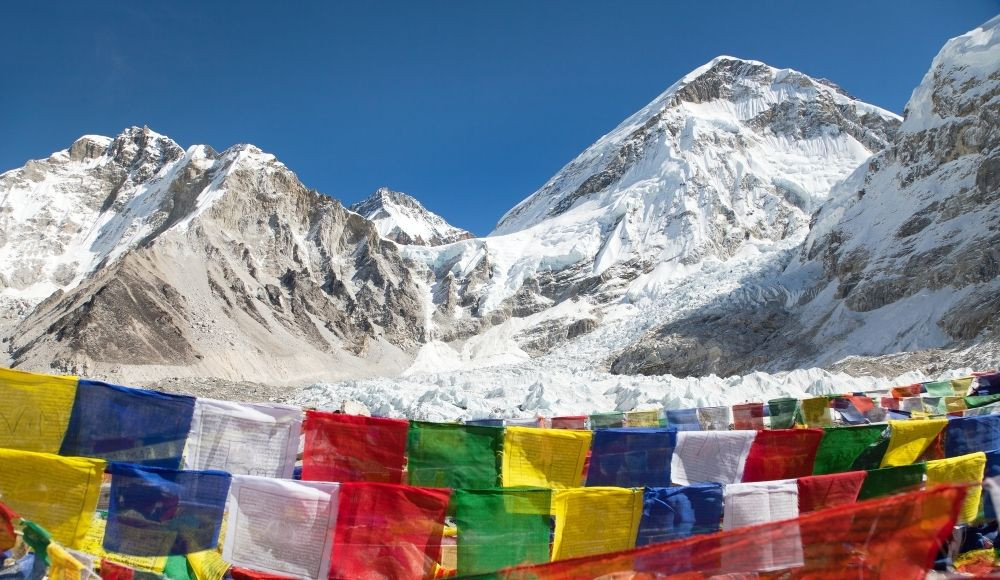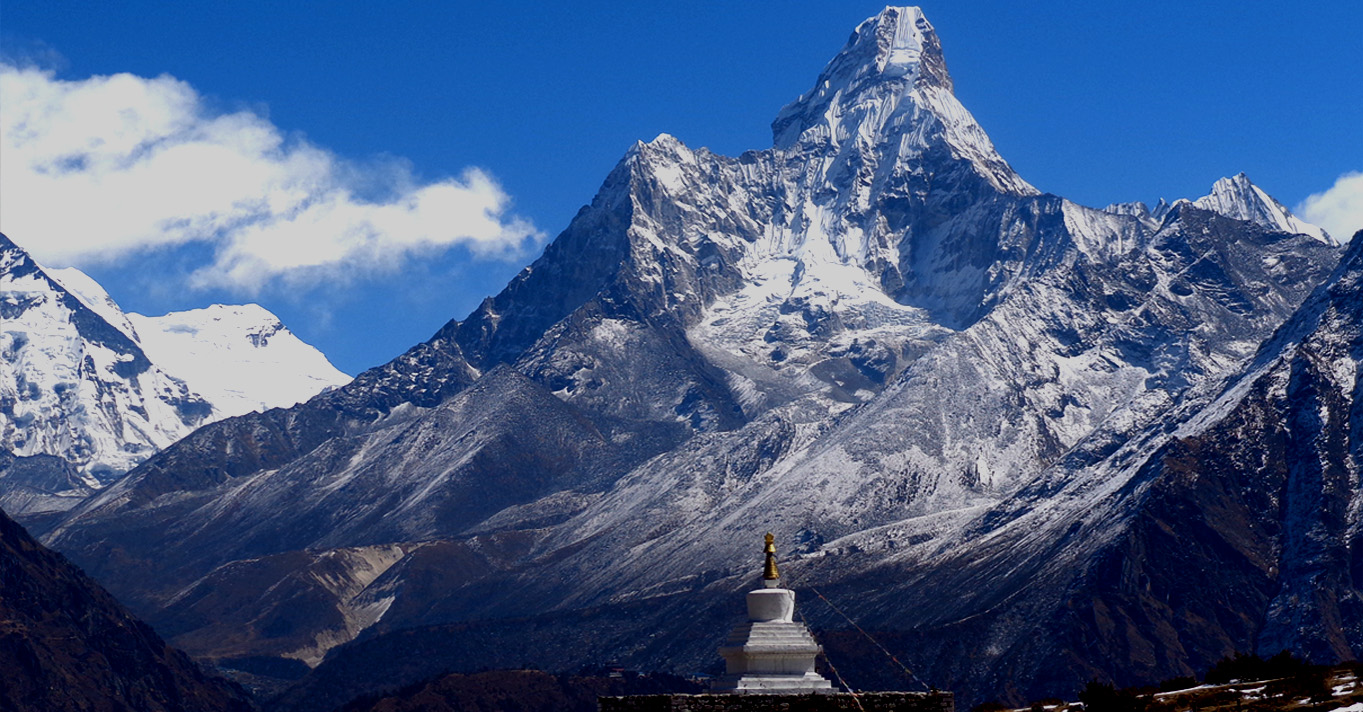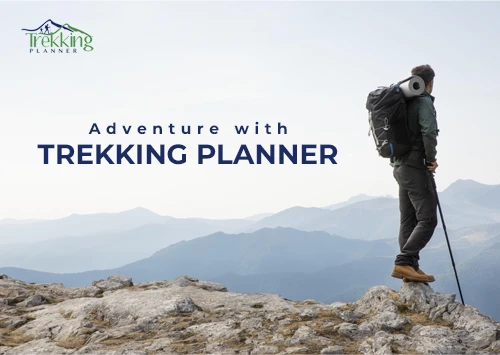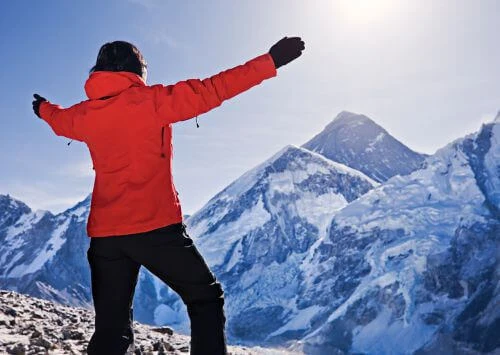Why November is the Best Time to Trek to Everest Base Camp
November is one of the most popular months to trek to Everest Base Camp, and for good reason. During this time, the weather is mild, with clear skies and dry conditions, making it the ideal time to trek. The temperature during the day ranges from 2°C to 12°C, while at night, it can drop to as low as -10°C. In November, the monsoon season has ended, and the trails are less crowded, allowing you to enjoy the trek at your own pace. Moreover, the views of the Himalayas are spectacular, with clear skies giving you an unobstructed view of the peaks.
Weather and Temperature in November
The weather in November is generally dry and sunny, with clear skies and relatively mild temperatures. The days are warm, with temperatures ranging from 2°C to 12°C, while the nights can be cold, with temperatures dropping to as low as -10°C. It is important to note that the weather in the Himalayas can be unpredictable, so it is best to be prepared for all types of weather conditions. In addition to packing warm clothing, you should also bring rain gear, as there is always a chance of rain or snow.
Recommended Read
Weather and Climate of Nepal

Physical Requirements for Trekking
Trekking to Everest Base Camp is a physically demanding activity requiring a certain fitness level and stamina. While you don't need to be an athlete to do this trek, you should be in good physical condition and be able to walk for several hours a day. It is recommended that you start training for the trek at least three months in advance. This can include cardiovascular exercises such as running, cycling, or swimming, as well as strength training to build up your leg muscles.
If your busy and are not able to do training try avoiding lifts and start jogging from your office to home or home to office.
Necessary Permits and Paperwork.
Before embarking on the Everest Base Camp Trek, you will need to obtain several permits and paperwork. These include a Sagarmatha National Park Entry Permit, a TIMS (Trekkers' Information Management System) card, and a permit to climb above the base camp. These permits can be obtained through Trekking Planner Nepal in Kathmandu or the Nepal Tourism Board. You will also need to have a valid passport and visa to enter Nepal.
Trekking Planner Nepal will arrange and complete all the necessary permits and paperwork to make your travel hassle-free.
Choosing Trekking Planner Nepal for Trekking in Nepal.
Choosing the right trekking company is crucial to the success of your Everest Base Camp Trek. Trekking Planner Nepal will provide you with experienced guides, porters, and quality equipment, ensuring that your trek is safe and enjoyable. When choosing a trekking company, it is important to look for one that is registered with the Nepal Tourism Board and has a good reputation. You should also check the reviews and ratings of the company online before making a decision.
Watch Nepal Trekking Planner reviews at reviews at least two.
Packing Essentials for The Trek.
When packing for the Everest Base Camp Trek, it is important to pack light but also ensure that you have all the necessary gear and equipment. Some of the essentials include warm clothing, a good quality sleeping bag, a waterproof jacket, durable trekking boots, a backpack, a hat and gloves, sunglasses, sunscreen, and a first aid kit. It is also important to bring water purification tablets or a water filter, as clean drinking water can be hard to find on the trail.

Accommodation and Food Options During the Trek.
During the Everest Base Camp Trek, you will stay in tea houses, which are basic lodges that provide food and accommodation. The tea houses are located at regular intervals along the trail, and the cost of accommodation and food is included in the Everest Base Camp Trekking Package. The food is generally simple and consists of rice, noodles, soups, and stews. Vegetarian options are also available. It is important to note that the tea houses can be quite basic, with shared toilets and private toilets somewhere and hot showers.
The Most Selling Itinerary for the Everest Base Camp Trek in November that Trekking Planner Nepal follows.
The Everest Base Camp Trek usually takes around 12-14 Days to complete, depending on your pace and itinerary. Here is a sample itinerary for the trek:
- Day 1: Fly from Kathmandu to Lukla and trek to Phakding (2610m).
- Day 2: Trek from Phakding to Namche Bazaar (3440m).
- Day 3: Rest Day in Namche Bazaar for acclimatization.
- Day 4: Trek from Namche Bazaar to Tengboche (3860m).
- Day 5: Trek from Tengboche to Dingboche (4410m).
- Day 6: Rest Day in Dingboche for acclimatization.
- Day 7: Trek from Dingboche to Lobuche (4910m).
- Day 8: Trek from Lobuche to Gorakshep (5140m) and hike to Everest Base Camp (5364m).
- Day 9: Hike to Kala Patthar (5545m) and trek back to Gorakshep.
- Day 10: Trek from Gorakshep to Pheriche (4270m).
- Day 11: Trek from Pheriche to Namche Bazaar.
- Day 12: Trek from Namche Bazaar to Lukla.
- Day 13: Fly from Lukla to Kathmandu.
Safety Tips and Precautions for Trekking to Everest Base Camp.
Trekking to Everest Base Camp can be dangerous, and it is important to take safety precautions to minimize the risks. Here are some tips to keep in mind:
- Acclimatize properly and take rest days as needed.
- Stay hydrated and drink plenty of water.
- Be aware of the symptoms of altitude sickness, such as headaches, nausea, and shortness of breath.
- Walk at a steady, slow pace and avoid overexerting yourself.
- Dress appropriately for the weather and wear sunscreen to protect your skin from UV rays.
- Listen to your guide and follow their instructions.
Conclusion and Final say From Trekking Planner Nepal.
The Everest Base Camp Trek is a challenging but rewarding experience that should be on every adventure fanatic's bucket list. By following the tips and information provided in this guide, you can ensure that your trek is safe, enjoyable, and memorable. Remember to plan ahead, pack light, and take the necessary safety precautions, and you'll be well on your way to conquering the highest peak in the World!
Explore Nepal Trekking Planner's Everest Base Camp Trekking Packages:
Everest Base Camp Trekking: 15 Days
Everest Luxury Lodge Trekking-14 Days
Ama Dablam with Everest Base Camp Trek-15 Days
Everest Base Camp Trek by Road: 17 Days








